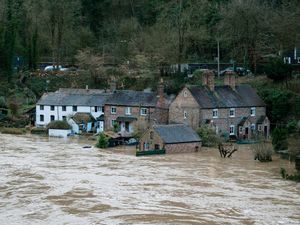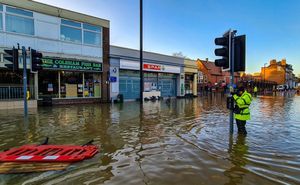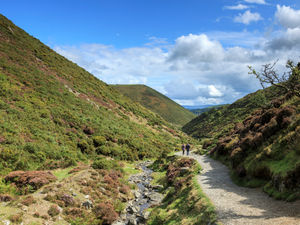Violent weather could bring more catastrophic flooding to Shropshire
Shropshire could see catastrophic floods in future if the UK does not make itself resilient to the more violent weather the climate emergency is bringing.

The warning comes from the Environment Agency which says the country faces more floods and droughts, rising sea levels and greater demand on water supplies. And the agency says it alone cannot protect everyone from increasing flood and coastal risks.
In a report ahead of UN Cop26 climate talks in Glasgow it warns traditional flood defences will not be able to prevent all flooding and coastal erosion.
Last year saw some of the worst flooding in Shropshire for decades.
February storms led to Shrewsbury town centre all but cut off as the River Severn burst its banks on the Smithfield Road and in Coleham.
Homes in the Ironbridge Gorge were evacuated and an official ‘danger to life’ warning was issued amid fears that the barriers along the Severn were in danger of not being able to withstand the 470 tons of water rushing through the gorge every second.
Flooding returned in January of this year.
Shropshire councillor Mike Isherwood, who represents the Green Party, said the party welcomed the hard-hitting report.
“We need to do everything we can to ensure policies in Shropshire reflect the need for change,” he said.
“We also need to protect the environmental features that help prevent flooding, enhance them going forward and ensure that future development takes into account the climate change.”
He said one of the things that Shropshire Council was doing was its tree planting programme.

Upstream of Shropshire, Mid Wales could provide the answer to prevent flooding in the county.
Former Montgomeryshire MP, Glyn Davies, said he had long been an advocate of holding the rain water that falls in Wales in the peat areas in the uplands.
The former farmer said: “We must work with nature, not fight nature.
“The bogs and peatlands are natural areas that can soak up the water and so not draining these areas for agriculture is a no-brainer.
“If we can control flooding this way then we can avoid the expensive and very difficult flood control measures needed downstream.”
There will be more and worse environmental incidents, such as flooding, water shortages and pollution, regulation is not ready for climate change and the natural world cannot adapt as fast as the climate is changing, the EA said.
Population growth and climate change will increase water demands and mean that, if no further action is taken between 2025 and 2050, more than 3.4 billion extra litres of water per day will be needed for resilient public water supplies.
Hotter drier summers, rising sea levels and pressures from development are are adding to water supply issues for people, industry, agriculture, recreational river use and wildlife.





